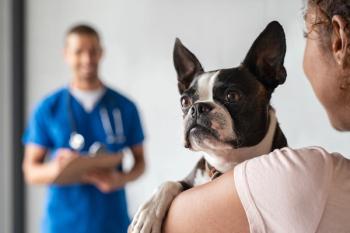
I remember the $5 examination fee
Last night, my family ordered dinner delivered from a Chinese food restaurant.
Last night, my family ordered dinner delivered from a Chinese food restaurant. As I handed over a $5 bill as a tip, I reflected back to my early teens, working after school in my family's 400-square-foot corner grocery store. I was responsible for deliveries and my usual expectation for a tip (not always a sure thing) was a nickel. Of course, around the holidays, I looked forward to a quarter, and just once I got a whole dollar.
Those were the days when a carton of cigarettes was $2 and a gallon of milk or a loaf of good bread was a quarter. Nine college years and four years of duty in the Air Force later, I joined a practice with a $5 examination fee (standard at the time), which, by the way, included a fecal.
Hundred dollar bills only started to show up in the 1980s on the heels of our last recession. Before then, only museums and banks had seen them. Fifties are now poised to replace the twenty as twenties have replaced tens in today's circulation.
Today, medical examinations are $50, ten times the standard of my first days, just as the tip I gave was 100 times what I received for the same service in the 1950s.
The immediate result, and the motivation for this month's column, is guilt. What practitioner who started with a $10, $20 or $30 examination fee doesn't feel a little queasy charging $50? The disease caused by the higher fee produces, for too many, a subconscious reduction in other fees and a drop in the average transaction fee.
What's the problem? Well, if you put an $80,000 associate and a $14/hour technician in your exam room with a client for 15 minutes and fail to produce an average invoice of $105.30, you're well on your way to bankruptcy. In practice after practice, where multiple owners and associates see clients, there soon appears one associate or owner most requested by pet owners. I would love the reason to be because of his or her diagnostic or communication skills, but that's seldom the case. Nine times out of 10, the doctor might say, "I need to give two injections, but I'm only going to charge you for one," or "I should look at this again in a week, but why don't you just call me in a week so we can save you a trip!"
I can relate. In my ancient days of $5 exam fees, I distinctly remember the first time I had to ask a client for $35 for services rendered. That was a fortune to me, but that's what that practice's fee schedule called for in those days. I trembled and started breathing again only when the client whipped out his checkbook.
$100 examinations on the way
Late 2011 or early 2012 will begin an inflationary cycle that will see $100 examinations. The $50 intestinal parasite screens will hit the fan! As the dollar slides further and further against other currencies, our team members will need to buy $5 and $6 gas to get to work. If a technician job becomes available a few miles closer to their homes, loyalties will be forgotten and staff will abandon us. The American Automobile Association reports that out-of-gas roadside emergencies are up 18 percent. Don't expect that your payroll will be easy to control by Thanksgiving.
I don't expect transactions to sink too much further. Most of your economically defecting clients have left by now, but the rebound many have been hoping and praying for will be postponed yet again.
Many practices will benefit by absorbing clients from closing practices that failed to reduce their overhead prior to the looming inflation. Warren Buffett recently observed, "If you have to have a prayer session before raising the price by 10 percent, then you've got a terrible business." Before this year is out, you will know what kind of business you have.
Roughly 3,000 veterinarians get their fee schedules from me. At least half weren't charging their clients fees appropriate for their neighborhoods and only fearfully approached the increases that should have been easily implemented. Don't be afraid to increase fees, and don't be surprised when you do increase and the apocalypse you anticipated fails to arrive.
Are you surprised you have less to spend each month? Try matching distributors' invoices for the same products against last year's prices. The solo practice in the 800-square-foot strip-center practice—with low, low overhead—is the least effected by our downturn.
You have a choice now. You can increase your fees, or you can let your practice fail. You only have to listen to the dozen or more calls I get each day from veterinarians in trouble to know what to do.
Dr. Snyder, a well-known consultant, publishes Veterinary Productivity, a newsletter for practice productivity. He can be reached at 112 Harmon Cove Towers Secaucus, NJ 07094; (800) 292-7995;
Newsletter
From exam room tips to practice management insights, get trusted veterinary news delivered straight to your inbox—subscribe to dvm360.






